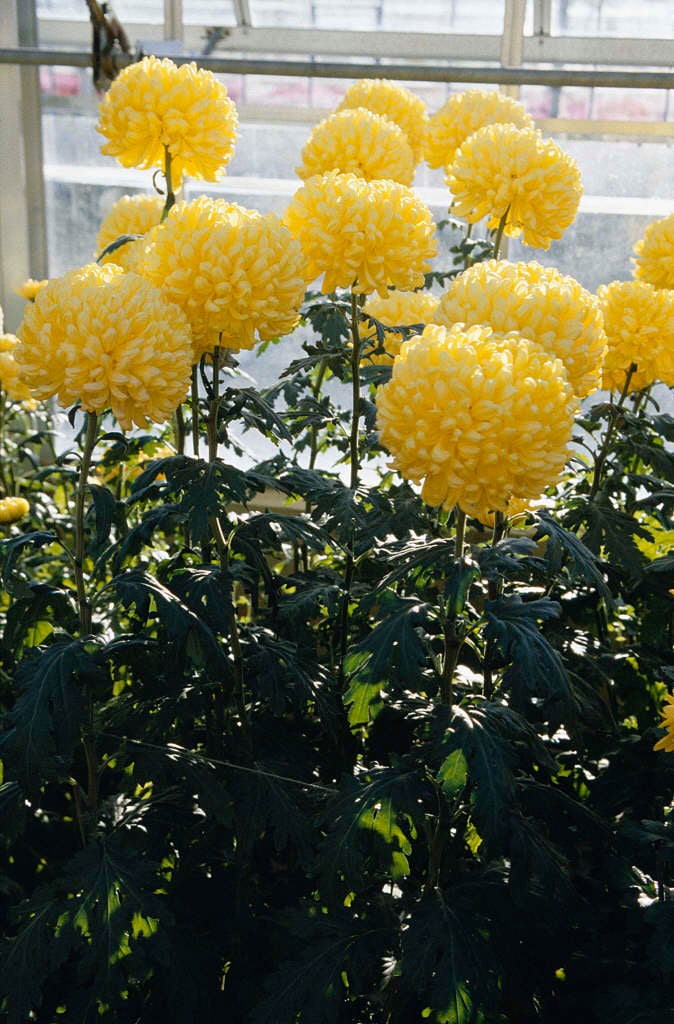Size
Ultimate height
0.5–1 metresTime to ultimate height
1–2 yearsUltimate spread
0.1–0.5 metresGrowing conditions
Moisture
Moist but well–drained, Well–drainedpH
Acid, Alkaline, NeutralColour & scent
| Stem | Flower | Foliage | Fruit | |
| Spring | Green | |||
|---|---|---|---|---|
| Summer | Green | |||
| Autumn | Yellow | Green | ||
| Winter |
Position
- Full sun
Aspect
South–facing or West–facing or East–facing
Exposure
Sheltered Hardiness
H2Botanical details
- Family
- Asteraceae
- Native to GB / Ireland
- No
- Foliage
- Deciduous
- Habit
- Bushy
- Potentially harmful
- Skin allergen. Wear gloves and other protective equipment when handling
- Genus
Chrysanthemum are erect woody-based perennials with aromatic, pinnately lobed leaves and flowerheads of diverse form, from late summer to late autumn
- Name status
Unresolved
- Horticultural Group
- Medium-flowered Indoor Incurved chrysanthemums have spherical, fully double flowerheads with florets curving upwards, borne in late autumn
How to grow
Cultivation
Grow in a sheltered site in full sun in fertile well-drained soil, enriched with organic matter and general purpose fertiliser. Water freely in dry weather. Pinching out the growing tip when the plants are 15-20cm tall to encourage free flowering bushy plants. Staking is usually required. There is no need to deadhead. In mild areas leave in the ground protected by a thick mulch. Elsewhere lift the crowns and store in a greenhouse, raising fresh plants from these each year
Propagation
Propagate by rooting softwood cuttings in peat-free potting compost at 16°C in spring. Pot on rooted cuttings in late June to early July into 23cm pots and pinch out as soon as established
Suggested planting locations and garden types
- Patio and container plants
Pruning
Pinch out growing tips and disbud as required
Pests
May be susceptible to leaf and bud eelworms, aphids, glasshouse whitefly, glasshouse red spider mite and capsid bug
Diseases
May be susceptible to glasshouse grey moulds, powdery mildews and chrysanthemum white rust
Get involved
The Royal Horticultural Society is the UK’s leading gardening charity. We aim to enrich everyone’s life through plants, and make the UK a greener and more beautiful place.
